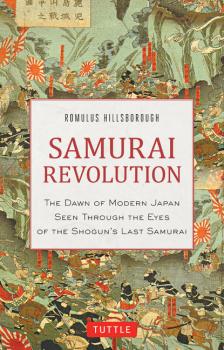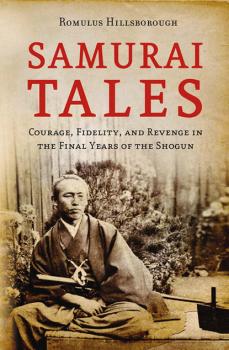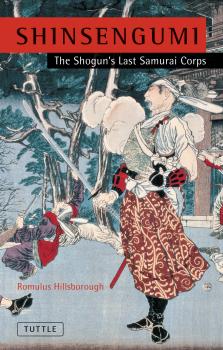ТОП просматриваемых книг сайта:
Romulus Hillsborough
Список книг автора Romulus HillsboroughАннотация
See the dawn of modern Japan through the lens of the power players who helped shape it — as well as those who fought against it — in this exploration of Samurai history. Samurai Revolution tells the fascinating story of Japan's historic transformation at the end of the nineteenth century from a country of shoguns, feudal lords and samurai to a modern industrialized nation. The book covers the turbulent Meiji Period from 1868 to 1912, widely considered «the dawn of modern Japan,» a time of Samurai history in which those who choose to cling to their traditional bushido way of life engaged in frequent and often deadly clashes with champions of modernization. Knowledge of this period is essential to understand how and why Japan evolved into the nation it is today. The book opens with the fifteen-year fall of the Tokugawa Shogunate, which had ruled Japan for over 250 years, and the restoration of the Meiji emperor to a position of power at the expense of the feudal Daimyo lords. It chronicles the bloody first decade of the newly reestablished monarchy, in which the new government worked desperately to consolidate its power and introduce the innovations that would put Japan on equal footing with the Western powers threatening to dominate it. Finally, Samurai Revolution goes on to tell the story of the Satsuma Rebellion, a failed coup attempt that is widely viewed as the final demise of the samurai class in Japan. This book is the first comprehensive history and analysis in English that includes all the key figures from this dramatic time in Japanese politics and society, and is the result of over twenty-five years of research focused on this critical period in Japanese history. The book contains numerous original translations of crucial documents and correspondence of the time, as well as photographs and maps. Samurai Revolution goes in-depth to reveal how one era of ended and another began.
Аннотация
Samurai Tales is about the legendary men from the samurai class who fought for the helm of power in 19th century Japan. These are stories of courage, honor, fidelity, disgrace, fate, and destiny set in the bloody time of political change and social upheaval in the final years of the Shogun. The final years of the samurai were an age of unprecedented turmoil and bloodletting in Japan. They heralded the end of nearly three centuries of rule under the Tokugawa Shogun. The rule of law was deteriorating, assassination and murder were rampant, and inner-fighting among the warrior class embroiled the nation. After the United States forced an end of over two hundred years of Japanese isolation, two contrasting philosophies were embraced by the samurai. On one side were those who would overthrow the shogun and restore the Emperor to power. Opposing the revolutionaries were the allies of the Tokugawa Bakufu, headed by the shogun.While the shogun's men clashed violently with the revolutionaries, as samurai they shared with each other an allegiance to an unwritten code of honor which governed the ways they lived and died. Theirs was a stoic system of morals which condoned suicide, vengeance and, in some cases, cold-blooded murder. Samurai Tales is, to quote author Romulus Hillsborough, «accurate portrayals of the heart and soul of the samurai, the social and political systems of whom have, like the Japanese sword, become relics of a distant age, but the likes of whose nobility shall never again be seen in this world.» In recounting what he terms «the great epic which was the dawn of modern Japan,» Hillsborough delves deeply into the psyche of the men of the samurai class. This book would serve well on the bookshelves of martial artists, those interested in samurai culture, or those interested in Japanese history.
Аннотация
Shinsengumi: The Shogun's Last Samurai Corps is the true story of the notorious samurai corps formed in 1863 to arrest or kill the enemies of the Tokugawa Shogun. The only book in English about the Shinsengumi, it focuses on the corps' two charismatic leaders, Kondo Isami and Hijikata Toshizo, both impeccable swordsmen. It is a history–in–brief of the final years of the Bakufu, which collapsed in 1867 with the restoration of Imperial rule. In writing Shinsengumi, Hillsborough referred mostly to Japanese–language primary sources, including letters, memoirs, journals, interviews, and eyewitness accounts, as well as definitive biographies and histories of the era.The fall of the shogun's government (Tokugawa Bakufu, or simply Bakufu) in 1868, which had ruled Japan for over two and a half centuries, was the greatest event in modern Japanese history.The revolution, known as the Meiji Restoration, began with the violent reaction of samurai to the Bakufu's decision in 1854 to open the theretofore isolated country to «Western barbarians.» Though opening the country was unavoidable, it was seen as a sign of weakness by the samurai who clamored to «expel the barbarians.»Those samurai plotted to overthrow the shogun and restore the holy emperor to his ancient seat of power. Screaming «heaven's revenge,» they wielded their swords with a vengeance upon those loyal to the shogun.They unleashed a wave of terror at the center of the revolution—the emperor's capital of Kyoto. Murder and assassination were rampant. By the end of 1862, hordes of renegade samurai, called ronin, had transformed the streets of the Imperial Capital into a «sea of blood.»The shogun's administrators were desperate to stop the terror. A band of expert swordsmen was formed. It was given the name Shinsengumi («Newly Selected Corps»)—and commissioned to eliminate the ronin and other enemies of the Bakufu. With unrestrained brutality bolstered by an official sanction to kill, the Shinsengumi soon became the shogun's most dreaded security force.In this vivid historical narrative of the Shinsengumi, the only one in the English language, author Romulus Hillsborough paints a provocative and thrilling picture of this fascinating period in Japanese history.



